La migración de tinte en la serigrafía puede ser un problema frustrante, especialmente al imprimir en tejidos sintéticos como el poliéster. Ocurre cuando el tinte de la tela comienza a traspasar la tinta impresa., haciendo que los colores en su diseño cambien o se desvanezcan. Este efecto suele aparecer después del proceso de curado., ya que el calor activa el tinte de la tela, lo que lleva a una mezcla de colores no deseada.
Pero no te preocupes: existen formas efectivas de abordar esto.! Usar tintas de bajo sangrado, aplicar una capa bloqueadora de tinte, y ajustar las temperaturas de curado son solo algunos métodos que le ayudarán a mantener sus impresiones nítidas y fieles al color.. Con estas técnicas, puedes evitarlo y asegurarte de que tus diseños se mantengan tan vibrantes como se esperaba.
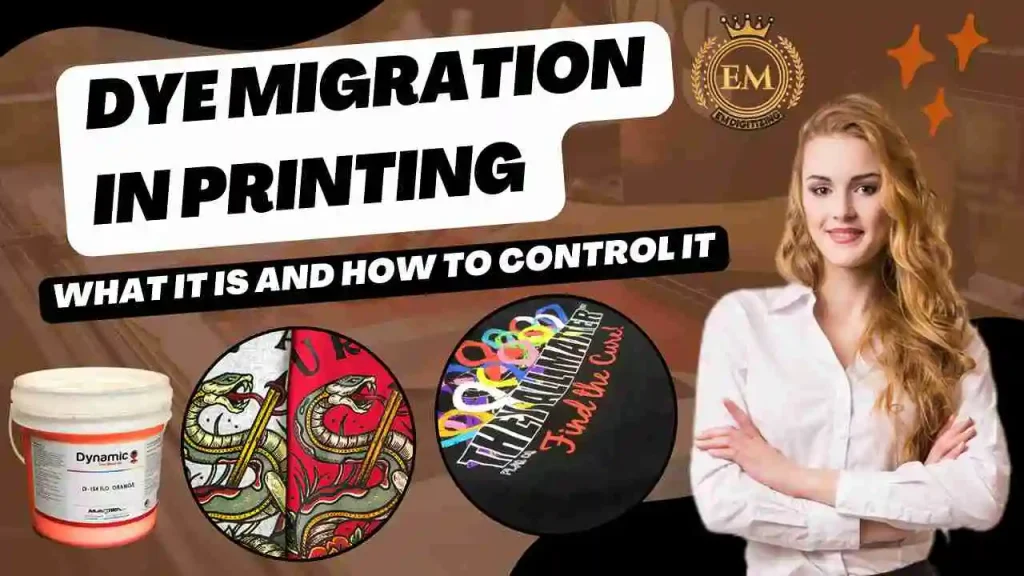
Migración de tintes en la impresión: Qué es y cómo controlarlo?
¿Qué es la migración de tintes en la impresión??
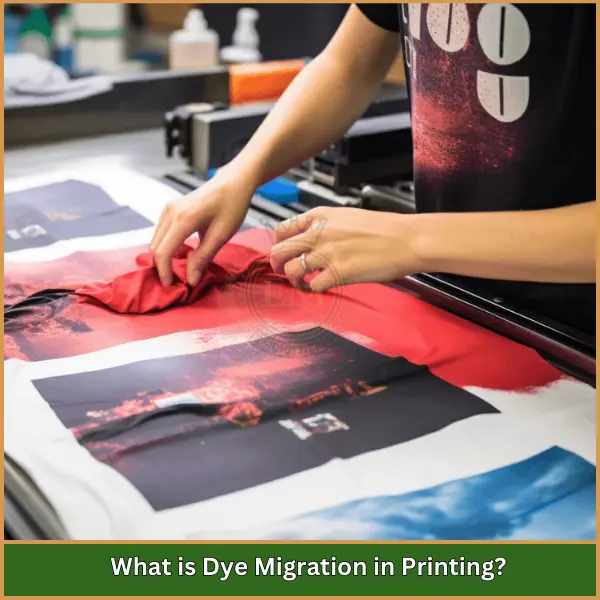
It refers to the process where dye from the fabric or garment material transfers or “;bleeds”; en la capa de tinta de un diseño impreso. Este problema ocurre a menudo en tejidos sintéticos., especialmente poliéster, cuando se expone al calor durante el proceso de curado. Las moléculas de tinte se vuelven móviles y pueden pasar a la tinta., causando una decoloración o tinte, que altera los colores previstos de la impresión y reduce la calidad general de la impresión..
¿Cuáles son los factores que causan la migración del tinte??
Ocurre debido a varios factores que influyen en cómo se mueven los colores en la tela.. Comprenderlos puede ayudar a prevenir cambios de color no deseados en sus impresiones..
- Tipos de telas susceptibles
- Calor y temperatura de curado
- Calidad y estabilidad del tinte
- Tipo de tinta y composición
- Niveles de humedad durante la impresión
- Tiempo y presión aplicados
1. Tipos de telas susceptibles
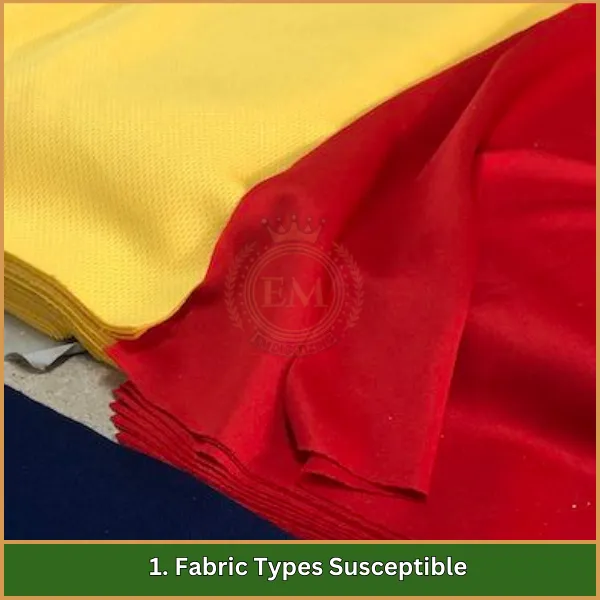
Ciertos tejidos son más propensos a la migración en la impresión que otros.. Materiales sintéticos, como poliéster y nailon, son particularmente susceptibles porque a menudo contienen tintes sensibles al calor. Cuando se aplica calor durante el proceso de impresión., Estos tintes pueden traspasar la capa de tinta., causando decoloración. Los tejidos mixtos con un alto porcentaje de fibras sintéticas también pueden experimentar este problema..
2. Calor y temperatura de curado

La cantidad de calor utilizada en el proceso de curado es un factor importante en la migración del color.. Cuando la temperatura es demasiado alta, Activa el tinte en tejidos sintéticos., permitiéndole migrar a la tinta. Para minimizarlo, Se recomienda utilizar temperaturas de curado más bajas siempre que sea posible., o tintas especializadas de bajo curado que reducen la necesidad de altas temperaturas..
3. Calidad y estabilidad del tinte
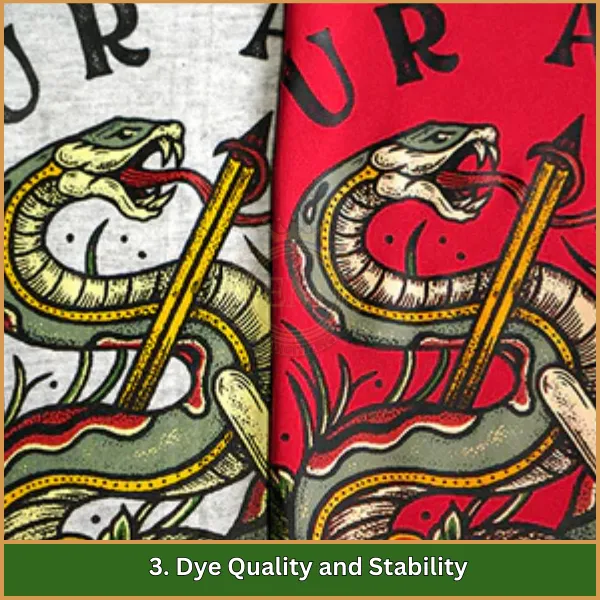
La estabilidad del tinte utilizado en el tejido juega un papel importante en este tema.. Los tintes inestables o de baja calidad tienen más probabilidades de sangrar cuando se exponen al calor y la presión.. Telas teñidas con alta calidad., Los tintes estables son menos propensos a la migración., asegurando que los colores impresos se mantengan fieles.
4. Tipo de tinta y composición
El tipo de tinta utilizada también puede afectar la migración del color.. Ciertas tintas están formuladas para bloquear o resistir la migración., haciéndolos adecuados para impresión sobre tejidos sintéticos. Los ejemplos incluyen:
- Tintas Plastisol de bajo sangrado: Estas tintas están diseñadas específicamente para reducir la migración formando una capa de barrera entre la tela y la tinta..
- Tintas compatibles con poliéster: Estas tintas están hechas para curar a temperaturas más bajas., Reducir el riesgo de migración en poliéster y mezclas sintéticas..
- Tintas base que bloquean el tinte: Estas tintas actúan como una capa de imprimación., evitando que el tinte se filtre en las capas superiores de tinta.
5. Niveles de humedad durante la impresión
La humedad en el entorno de impresión puede contribuir a la migración del color.. La alta humedad puede aumentar el contenido de humedad en las fibras de la tela., haciéndolos más susceptibles a la migración de la impresión relacionada con el calor durante el curado. Es fundamental controlar la humedad en el área de impresión para evitar el movimiento excesivo del tinte..
6. Tiempo y presión aplicados
La cantidad de tiempo y presión aplicada durante el proceso de impresión y curado también afecta la migración del tinte.. La presión excesiva o la exposición prolongada al calor pueden hacer que el tinte se transfiera más fácilmente a la tinta.. Usar la presión suficiente y reducir el tiempo de exposición durante el curado puede ayudar a prevenir la migración., especialmente en tejidos sensibles.
Cómo prevenir la migración de tintes en la serigrafía?
Es esencial mantener la calidad de diseños impresos en telas sintéticas. A continuación se muestran métodos eficaces para ayudar a controlar y solucionar los problemas de migración de tinte en la serigrafía..
- Utilice tintas de bajo sangrado
- Temperatura de curado más baja
- Aplicar base bloqueadora de tinte
- Elija telas estables al tinte
- Controlar los niveles de humedad
- Utilice la configuración adecuada de presión y tiempo
- Impresiones de prueba
1. Utilice tintas de bajo sangrado
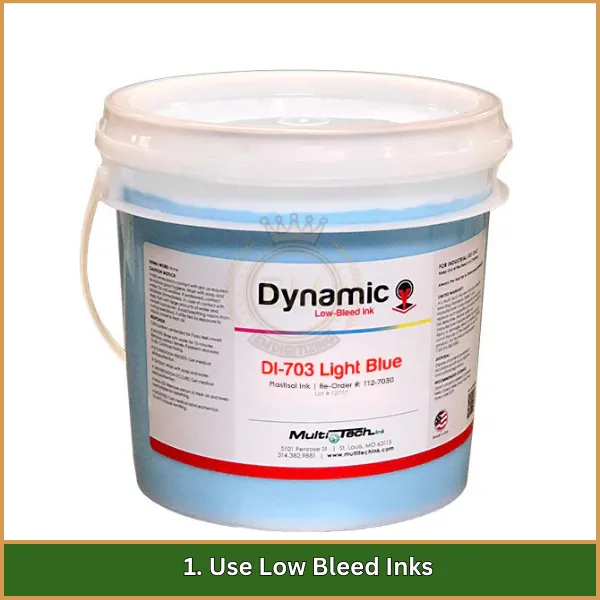
Están especialmente formulados para resistir la migración de color creando una barrera entre el tinte de la tela y la tinta impresa.. Estas tintas actúan como bloqueador de la migración de tintes., ideal para imprimir sobre tejidos sintéticos, como poliéster, donde la migración es más probable. El uso de tintas de bajo sangrado ayuda a mantener los colores reales de la impresión y evita tintes no deseados..
2. Temperatura de curado más baja

Las altas temperaturas de curado pueden provocar migración en tejidos sintéticos. Bajar la temperatura de curado reduce la posibilidad de que el tinte pase a la capa de tinta.. Muchas tintas de bajo curado están diseñadas para curarse eficazmente a temperaturas más bajas., convirtiéndolos en una excelente opción para reducir la migración en serigrafía..
3. Aplicar base bloqueadora de tinte
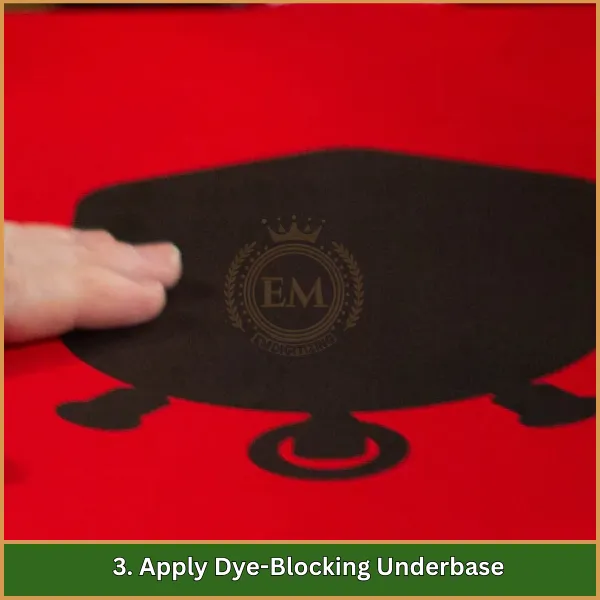
Una base que bloquea el tinte actúa como una capa de imprimación que evita que el tinte se filtre en la tinta impresa.. Esta base, típicamente blanco o claro, Se aplica antes de la capa principal de tinta para crear una barrera protectora.. Es especialmente útil para prevenir la migración en tejidos sintéticos de colores oscuros o brillantes..
4. Elija telas estables al tinte
Algunas telas se tiñen con tintes estables., tintes de alta calidad que son menos propensos a la migración. Optar por telas estables al tinte puede ayudar a reducir el riesgo de migración y mantener intacto el diseño impreso.. Verifique las especificaciones de la tela o consulte a los proveedores para asegurarse de que los materiales utilizados sean adecuados para la serigrafía..
5. Controlar los niveles de humedad
La alta humedad en el entorno de impresión puede aumentar la probabilidad de migración. El exceso de humedad hace que las fibras del tejido sean más sensibles al calor., lo que puede hacer que el tinte sangre. Mantener niveles óptimos de humedad en el espacio de trabajo ayuda a controlar el movimiento del tinte y produce resultados de impresión más consistentes..
6. Utilice la configuración adecuada de presión y tiempo
La presión excesiva o la exposición prolongada al calor durante el curado pueden promover la migración del color.. Utilizando la cantidad adecuada de presión y reduciendo el tiempo de curado siempre que sea posible., Puedes minimizar la transferencia de tinte a la tinta.. Ajustar estas configuraciones según el tipo de tela puede ayudar a prevenir la migración y mejorar la calidad de la impresión final..
7. Impresiones de prueba
Antes de proceder con tiradas grandes, Pruebe una pequeña muestra para comprobar si hay signos de migración.. Este paso le permite hacer los ajustes necesarios, como modificar el tiempo de curado o cambiar a una tinta de bajo sangrado, para garantizar que las impresiones finales sean vibrantes y libres de migración.
Consejos para prevenir la migración de tinte en sus impresiones
Evitar la migración de color es esencial para producir colores nítidos., impresiones limpias sin cambios de color inesperados. A continuación se muestran algunos pasos sencillos que le ayudarán a mantener sus diseños con un aspecto nítido.:
- Opte por telas teñidas con tintes estables., colores de alta calidad, ya que es menos probable que sangren.
- Elija tintas de bajo sangrado específicamente formuladas para resistir la migración del color del tinte..
- Utilice una capa de imprimación que bloquee el tinte en telas propensas a la migración para mayor protección..
- Establezca temperaturas de curado más bajas para reducir el riesgo de sangrado del tinte provocado por el calor..
- Mantenga los niveles de humedad bajo control para evitar que la humedad afecte el movimiento del tinte..
- Aplique la cantidad adecuada de presión y evite el curado excesivo para limitar la migración..
- Pruebe siempre una impresión de muestra para asegurarse de que los resultados finales se mantengan fieles al color..
Terminando
para terminar, Mantener la migración del tinte bajo control es esencial para lograr colores vibrantes., impresiones duraderas. Con las técnicas adecuadas, como elegir tintas de bajo sangrado, ajustar las temperaturas de curado, y aplicar capas que bloqueen el tinte: puede evitar con confianza cambios de color no deseados en sus diseños.
Para aquellos que buscan servicios de arte vectorial de primer nivel, EMDigitizing está aquí para ayudar! Ofrecemos arte vectorial de alta calidad con tiempos de respuesta rápidos y tarifas asequibles.. Más, Garantizamos calidad y ofrecemos una opción de vista previa., para que siempre estés seguro de tu diseño final. Si eres cliente por primera vez, aprovechar un 50% descuento en tu primer pedido! Listo para darle vida a tus diseños? Empezar con EMDigitalización hoy!
